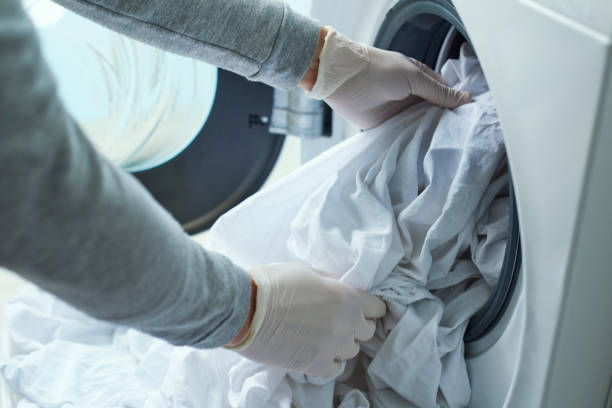Ensuring the cleanliness and safety of your laundry is essential to maintaining good health. Sanitizing your laundry properly helps to eliminate harmful bacteria, viruses, and fungi that may linger on clothing, linens, and fabric. This comprehensive guide will teach you how to effectively disinfect your laundry, providing tips and methods for different types of fabric and stains.
Understanding the Importance of Sanitizing Laundry

Sanitizing laundry is crucial in preventing the spread of infections and illnesses. Regular washing may not be sufficient to kill all pathogens, especially if someone in your household is sick. Using disinfectants and proper washing techniques ensures that germs are thoroughly eradicated. Clean laundry not only brings peace of mind but also protects vulnerable individuals such as children, the elderly, or those with compromised immune systems.
Using Hot Water and Detergent
One of the most effective ways to sanitize your laundry is by using hot water. Set your washing machine to the highest temperature suitable for the fabric. Combine hot water with a high-quality detergent to increase the efficacy of the wash. The heat helps to break down and kill microorganisms, while the detergent works to remove dirt and oils harboring these pathogens. Always check the care label on your clothing to ensure the hot water won’t damage the fabric.
Incorporating Bleach for Optimal Cleanliness
Bleach is a powerful disinfectant that can be added to your laundry to ensure thorough sanitization. It’s particularly effective for white linens, towels, and other bleach-safe items. Add the bleach to your washing machine following the manufacturer’s instructions. However, be cautious when using bleach on colored fabrics, as it can cause discoloration. For colored or delicate items, consider using a color-safe bleach alternative or an oxygen-based bleach.
Detergent Additives: Boosting Your Laundry Sanitization
In addition to regular detergent, you can use specialized detergent additives designed to eliminate germs. These products often contain antibacterial and antifungal agents and can be used alongside your regular laundry detergent. Follow the instructions on the product for the best results. Some popular detergent additives include laundry sanitizers or disinfectant sprays, which can be used in both high-efficiency (HE) and standard washing machines.
The Power of Sunlight and Air Drying
Natural sunlight is a free and effective way to sanitize your laundry. The ultraviolet (UV) rays from the sun have bactericidal properties that can kill or deactivate bacteria and other microorganisms. Hang your clothes, linens, and other washable items outside to dry whenever possible. Air drying not only helps to disinfect your laundry but also saves energy and reduces wear and tear on your clothes compared to machine drying.
Proper Hygiene Practices: Tips for Effective Laundry Sanitization
Here are some additional tips to help you maintain sanitized laundry in your home:
- Wash hands thoroughly before and after handling dirty laundry.
- Separate laundry items by their levels of contamination to prevent cross-infection.
- Frequently clean and disinfect your washing machine to eliminate any lingering pathogens.
- Use disposable gloves when handling laundry from a person who is sick or has a skin infection.
- Store clean laundry in a dry, clean area to prevent recontamination.
Conclusion
Sanitizing your laundry is an essential step in maintaining a healthy and germ-free home environment. By using hot water, adding bleach or detergent additives, leveraging the power of sunlight, and following proper hygiene practices, you can ensure that your clothing, linens, and fabrics are thoroughly disinfected. Implement these methods into your regular laundry routine to keep your household safe from harmful pathogens.
FAQs
Can I use vinegar to sanitize my laundry?
Vinegar has mild antibacterial properties and can be effective for minor disinfection but is not as powerful as bleach or commercial laundry sanitizers. It can be added to the rinse cycle to help reduce odors and soften fabrics.
How often should I sanitize my laundry?
It’s a good idea to sanitize laundry regularly, especially if someone in your household is ill or has a compromised immune system. High-touch items like towels and bedding should be sanitized more frequently.
Is it safe to use bleach on all fabrics?
No, bleach can damage delicate fabrics and cause discoloration on colored items. Always check the care label and use color-safe or oxygen-based bleach alternatives for non-white or sensitive fabrics.
What temperature should I use to safely sanitize my laundry?
Using water at least 140°F (60°C) is recommended for effective sanitization. However, always check the care label of your clothing to ensure the fabric can withstand higher temperatures without damage.
Can I sanitize my laundry without a washing machine?
Yes, you can hand wash items using hot water and a disinfecting detergent or soap. Ensure the water is at a safe hot temperature, and soak the items for a sufficient amount of time to effectively kill germs.
